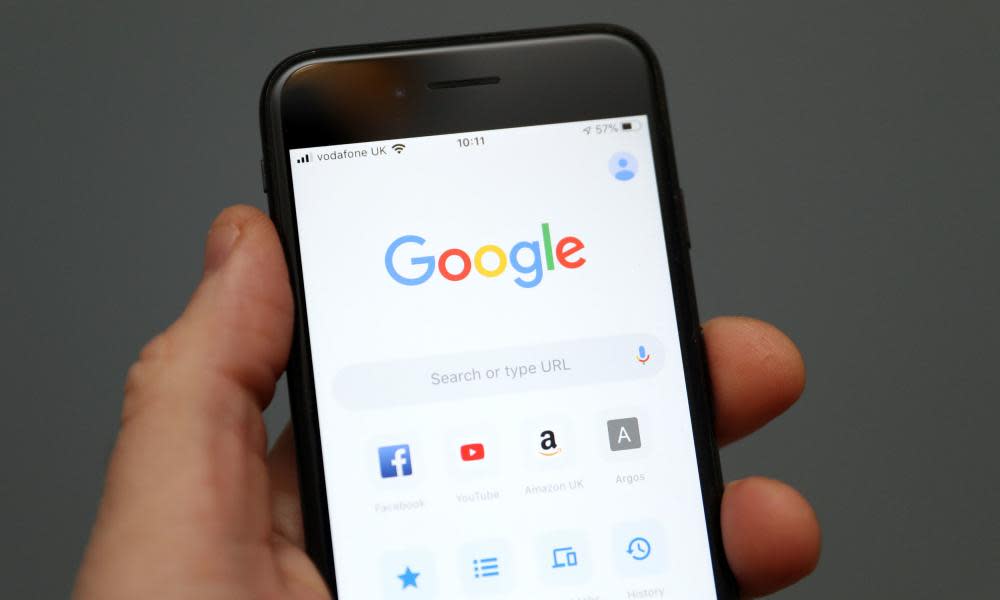Doctors fear Google skin check app will lead to ‘tsunami of overdiagnosis’

Google’s entry into health diagnostics has alarmed health experts who fear a new artificial intelligence tool to identify skin conditions could lead to overdiagnosis, or rare and complex skin conditions being missed.
At a technology conference in the US on Tuesday, Google revealed there are almost 10bn Google searches related to skin, nail and hair issues every year. In response, Google has developed an artificial intelligence “dermatology assist tool” for people with concerns about their skin. Users of the app can use their phone to take three images of their skin, hair or nails from different angles.
Related: Patients suffering from too much medicine, peak health bodies say
The app will then ask users questions about their skin type, how long they have had the issue, and for other symptoms that help narrow down the possibilities.
“The artificial intelligence model analyses this information and draws from its knowledge of 288 conditions to give you a list of possible matching conditions that you can then research further,” Google said in a statement.
“The tool is not intended to provide a diagnosis nor be a substitute for medical advice, as many conditions require clinician review, in-person examination or additional testing like a biopsy. Rather we hope it gives you access to authoritative information so you can make a more informed decision about your next step.”
The immediate past president of the Australasian College of Dermatologists, Dr Andrew Miller, said it was true that there is a global shortage of dermatologists worldwide, making it difficult for people with concerns to see a specialist.
“Around the world there are about 100,000 dermatologists, and considering there are almost eight billion people in the world that’s an amazing shortage,” he said. “We also have maldistribution of more in city and well-off areas and less in rural and disadvantaged areas. So I definitely understand that issues of access are front of mind.”
Related: Australians' skin cancer checks being performed by untrained GPs, experts warn
But Miller said government-subsidised appointments allowing GPs to collaborate with dermatologists were the answer, not artificial intelligence [AI]. He said while telehealth appointments might be subsidised, they were not an ideal way to examine skin or to take photographs, because images taken during video streaming were poor quality.
“What we want is subsidies to be able to work with GPs who will contact us with the patient’s history, and who can take good quality photographs for us and send those through. We can then take our time to analyse those and, with the patient’s consent, work with their GP to come up with a treatment plan. We already do this kind of work where we can, but there is complex back-of-house analytical work that requires more than just a telehealth appointment.
“But there is no Medicare schedule for dermatology to be performed via telehealth in the way we would like to do it, which is involving the GP and having time to analyse properly taken images.”
In this situation Miller said the GP could explain the next steps and treatments, but this level of communication would not be available for people using Google.
“The standard textbook for dermatology is four volumes thick and weighs a couple of kilos,” Miller said. “People do get rare things. One of the things doctors and specialists have is an antennae that there is something wrong even if it may not look obvious, and when talking to a patient you also read body language and get a sense of whether they understand what you are telling them and if they are taking it all in.
“I’d worry that with a computer, people might ignore advice to see a doctor, or the algorithm might miss anything complex. I’d also worry that they might misunderstand questions asked by the app.”
There is some evidence that AI has diagnostic potential. A 2017 study published in the journal Nature found an artificial intelligence network was capable of classifying skin cancer with a level of competence comparable to dermatologists. “It is projected that 6.3bn smartphone subscriptions will exist by the year 2021, and can therefore potentially provide low-cost universal access to vital diagnostic care,” the paper says.
But assistant professor and NHMRC early career fellow with Bond University’s Institute for Evidence-Based Healthcare Dr Ray Moynihan said; “There is great concern that the entry of Big Tech into healthcare will bring a tsunami of overdiagnosis – because there is a lot of money to be made telling healthy people they are sick.”
While early detection of deadly skin cancers such as melanoma is essential to improving the success of treatment, there is growing concern that harmless lesions are being diagnosed as melanoma, with the consequences being unnecessary treatment, psychological distress and medical costs. A study published in 2020 in the Medical Journal of Australia found 58% of melanomas were overdiagnosed, or 24% of all cancer diagnoses.
Related: Medical tests promoted in media with no mention of potential harm, Australian study finds
“There is already compelling evidence of much overdiagnosis of skin cancer – and over-enthusiastic acceptance of new screening tools could make the problem far worse,” Moynihan said.
“There is of course the chance that careful judicious use of some of this new technology could reduce the problem of overdiagnosis, by better distinguishing between malignant and benign problems – but that would require rigorous evaluation of risks and benefits by independent researchers and regulators.
“What we have at the moment are puffed up press releases and promotional media stories that make no mention of the potential downsides of these experimental AI tools – and one of the biggest downsides is unnecessary diagnosis, and the harm, anxiety and waste that can cause.”

 Yahoo News
Yahoo News 
